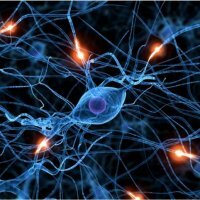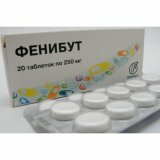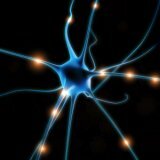Inflammation of nerve endings

The causes of neuritis are inflammation of the peripheral nerves, sensations are painful, and cases of complete loss of sensitivity are often observed. If several nerve endings are affected at once, then neuritis flows into polyneuritis, paresis or paralysis is possible.
Among the multiple causes of inflammation of the nerve endings, the regular diseases of the nervous system are particularly prominent. Often, the cause of the disease can become a jammed nerve muscle, joints or tendons, because of which the nerve swells. If we take as an example the neuritis of the facial nerve, the edema disrupts the blood supply of a large part of the bone canal.
Intercostal neuritis and neuritis of the sciatic nerve also cause swelling and squeezing, which causes sharp and sharp pain. Such diseases are predisposed to people with a certain device of the bone channel of the conduction nerve. These channels are located in the spine and in the skull. Conditions such as sharp cooling and drafts, are favorable for the appearance of neuritis.
Types of neuritis
- Primary ischemic, cold neuritis, may occur suddenly due to severe hypothermia or prolonged draft, while the person will not feel ill.
- Secondary neuritis occurs due to other diseases, here include:
- Neuritis of the facial nerve, it is located on the upper part of the tongue, the auricle or on the cheek surface;
- Neuritis due to herpes zoster, affecting the tissues, including nerve endings;
- Neuritis( auricular nerve) developed due to vascular diseases;
- Neuritis of the intercostal nerves, is expressed in severe pain between the ribs on the back, abdomen or on the side;
- Neuritis of unknown forms. There are cases when it is not possible to find a source, as a rule, this is due to the malfunctioning of the immune system. In cells, failure occurs and instead of protecting, cells begin to attack and destroy the body.
Neuritis manifestation
It is difficult to describe the manifestation unambiguously, in many respects depends on which part of the body and for what reason the nerve is affected.
In case of neuritis of the facial nerve, there is a sharp pain behind the ear, in this case the facial expression is clearly changing, as a rule, it is reflected in the corner of the mouth, changes in the nasolabial fold are noticeable. It is noteworthy that an asymmetrical skew is more visible on the healthy side than on the patient. Often the eye ceases to close, it starts to water and emphasizes the overall painful picture.
Neuritis of the optic nerve is marked by severe cutting pain while moving the eyeball. The color sensitivity decreases, eyesight deteriorates, especially after a hot sauna and physical exertion, headaches often appear. The eye does not cover the horizon as widely as before, a stain in the center may appear, the image becomes cloudy and dims.
Neuritis of the sciatic nerve. There is a sharp change in the sensitivity of the leg, especially the shin. The mobility of the foot or knee joint deteriorates.
Neuritis of the ear nerve. Symptom is a sharp decrease in hearing due to noise in the ears. When listening to music, a person notices that he does not hear high-frequency sounds, the bass is heard well, then low frequencies are not heard when the disease develops. Occasionally sudden dizziness causes nausea and impaired coordination.
Treatment of neuritis
For correct treatment, it is necessary to establish the cause of the disease that caused it. If the cause is an infection, then a course of antibacterial injections with the use of antibiotics is prescribed, and also antiviral medications are used: gamma globulin or interferon.
If the cause is ischemia, then drugs that stimulate the work and vasodilation are used: euphyllin, papaverine and complamine.
In case of traumatic neuritis, it is necessary to immobilize the limb. For treatment use analgesics, anti-inflammatory and pain medications, diclofenac, ibuprofen, indomecin. Necessary treatment is prescribed to remove edema, diacarb or furosemide is used, vitamins of group B are pierced. Two weeks later, biogenic and anticholinesterase drugs like aloe, lidase, and proserin are used.
Physiotherapy is the last step. To do this, use pulsed currents, electrophoresis with ointment hydrocortisone and novocaine, UHF heating is used, etc.
There are a number of well-proven exercise therapy and massage, to restore and relax the affected muscles.
If surgical intervention is required, it is already the work of neurosurgeons, resort to this in case of severe nerve compression, to release it. Sometimes you can not let the nerve begin to grow again in this direction, in which case surgery is also required.



